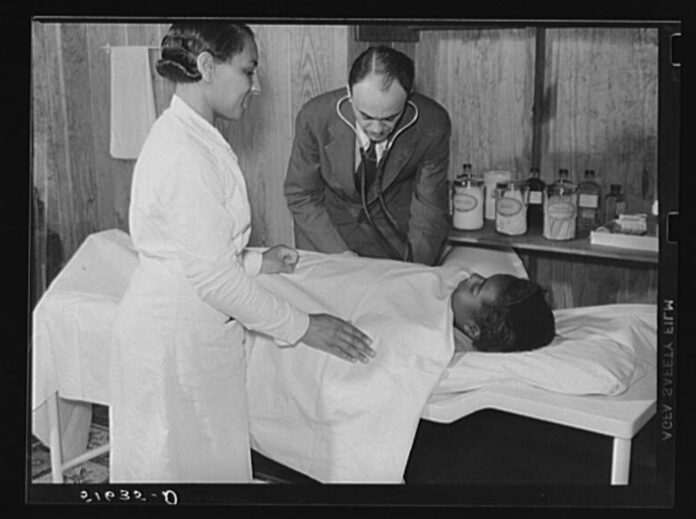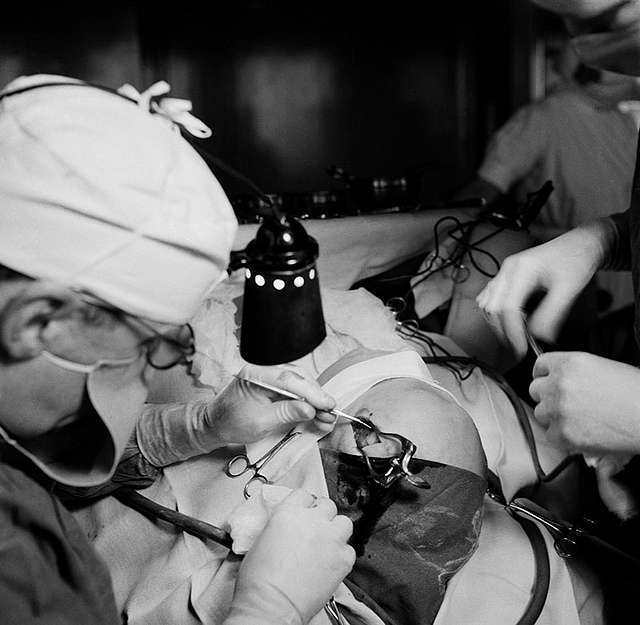Just decades earlier, many patients experienced cruel therapy methods as part of their mental health treatments. Among those unfortunate people, some of them did not even have mental problems, to begin with. One of the most common conditions that were thought to be bothering during that time was homosexuality. You will find some disturbing cruel therapy methods in the list below, don’t forget to share your thoughts.
1Electroconvulsive Therapy

Electroconvulsive therapy (ECT) was a treatment that involved sending an electric current through a person’s brain. This would cause a brief surge of electrical activity within the brain that also triggered a seizure. What could be the disease that require such bizarre treatment back in the old days? The main goal of this cruel therapy is to relieve the symptoms of mental disorders and other mental health problems. People suffering from catatonia, dementia, severe depression, severe mania, etc. would go through this form of therapy. The patients were on treatment twice a week, and they would beg, cry, plead, and resist because of the pain. During the early treatment, ECT was given in high doses of electricity without anesthesia which led to many side effects. Those include fractured bones, memory loss, and several other consequences that the patients lived with for the rest of their lives.
2Hydrotherapy

Hydrotherapy aka water cure or water therapy was a popular method of treatment for mental illness at the asylums. In the early 20th century, people believed that this form of therapy was an effective method to cure many patients. Hydrotherapy came in many different sorts, and all of them were almost equally cruel. There were some caretakers or doctors who used hydrotherapy more as a punishment than treatment. One of those involved mummifying the patient in towels soaked in ice-cold water or locking the patient inside a tub filled with ice. After an amount of time, the patient would be moved to another tub with a high level of heat. Meanwhile, some patients were required to stay submerged in a bath for hours or even days while being strapped in.
No matter if it was cold or hot water, hydrotherapy was one of the cruelest therapy methods back then. The most brutal of them all were the sprays or the hosing down. During this treatment, the patient had to stand in the stall while an attendant used a hose or spraying station to bombard that patient. The water was either hot or cold, and the treatment lasted for several minutes at a time. Although it was shorter than other methods, the sprays were still the most humiliating and traumatizing experience for the patients. Homosexuality was considered as a mental illness at the time, so hydrotherapy was one of the cures for the behavior.
3Insulin Shock Therapy

Introduced in 1927, insulin shock therapy was one of the common psychiatric treatments mainly for schizophrenia. During the treatment, the patients would receive large doses of insulin in order to produce daily comas over several weeks. It began when an Austrian-American doctor Manfred Sakel used low doses of insulin to treat drug addicts and psychopaths. After one of the patients experienced better mental clarity after he went into an accidental coma, he thought it was useful. Sakel believed that this treatment might work for mentally ill patients, so he began treating schizophrenic patients with larger doses of insulin. The process repeated again and again until the patients experienced anywhere from 30 to 50 comas.
This therapy remained in the field for years on patients with mental illness although there was never evidence of its effectiveness. The doctors who practiced insulin shock therapy believed that it could relieve many symptoms in schizophrenic patients. They thought the patients would have less anxiety, compulsion thinking, delusions, elation, fear, hallucinations, hostility, irritability, obsessive thinking, and paranoid projections. After the deep sleep, the patients expressed a feeling of being reborn which they believed to be the cure. However, the common side effects were permanent brain damage, obesity, and sometimes death. This is probably the least cruel therapy method among the others, but it also killed a number of patients.
4Lobotomy

The list of cruel therapy methods is incomplete without lobotomy, a form of treatment by Portuguese doctor Antonio Egas Moniz. He believed that mental illness was generally caused by problems in the neurons of the frontal lobe. The frontal lobe is part of the brain that is behind the forehead, and he had an idea for treatment. It began when he heard about a monkey whose violent feces-throwing urges had been curbed by cuts to the frontal lobe. That gave him the courage to try the lobe-cutting method with some of his patients. He also believed that this bizarre technique could cure insanity while leaving the rest of the patient’s mental function normal. To his success, he received the Nobel Prize in 1949. Things started to go south when this successful therapy reached the United States in the 1930s.
Neurologist Walter Freeman traveled the country to perform lobotomy on everyone from catatonic schizophrenics to disaffected housewives. The methods that he performed required no operating rooms, surgeons, or anesthesia like the original ways. His procedure involved inserting a small ice pick into the brain through the eye socket and wiggling it around a bit. He tested his idea on cadavers and grapefruit in his own kitchen, and that was the root of the problem. The problem was that he did not bother with sterile techniques, had no surgical training, and was imprecise when describing patients’ recovery. Truth was the patients were virtual zombies who scarcely responded to the world around them. That was why there have been calls in the early 21st century for the Nobel Foundation. The purpose was to rescind the prize is awarded to Moniz for developing lobotomy but the Foundation declined to take action.
5Psychiatric Medications

Drugs had been used in treating mentally ill patients since the mid-1800s. Doctors would administer drugs like opium and morphine that led to many side effects and the risk of addiction. Even worse, some doctors would use toxic mercury in order to control mania in those patients as well. Such barbaric and cruel methods put the patients into a deep sleep with belief that it would improve their madness. Another purpose of these cruel therapy methods was to keep overcrowded asylums more manageable. In 1955, there were over 500,000 patients in asylums when the first effective antipsychotic drug was introduced. By 1994, the number of patients decreased to just 70,000 and it kept going down as the years passed by. Just like other therapies, this one also did not work and the patients had to face their fear of living in the inhumane asylums for life.
6Trephination

Nothing describes cruel therapy betters than a hole in a human skill as a part of treatment. Trephination is a surgical intervention where a doctor incises, drills, or scrapes into the patient’s skull using surgical tools. During the treatment, the skull drilling was to remove a piece of bone called dura mater. The removal process was conducted without damaging the underlying blood vessels’ meninges and the brain. This therapy was to treat health problems associated with epileptic seizures, intracranial diseases, mental disorders, and migraines by relieving pressure. However, the original idea was to create a door through which the demons can escape from the patient’s head.
Despite the fact that the idea was somehow bizarre, cultures all over the world used it as a way to cure patients. In fact, trephination was quite popular from the Neolithic era to the early 20th century which was quite long. The unbelievable part was that most of the patients survived the procedure while having a hole in their skull. This definitely explains why archaeologists have uncovered skulls with a carefully cut circular gaps in various locations around the world. Different cultures use different tools like flint, hard stone knives, obsidian, etc. This is probably one of the creepiest ways to treat an illness, and thanks to modern days that this doesn’t exist anymore.
Related Post: Most Evil Human Experiments In History




